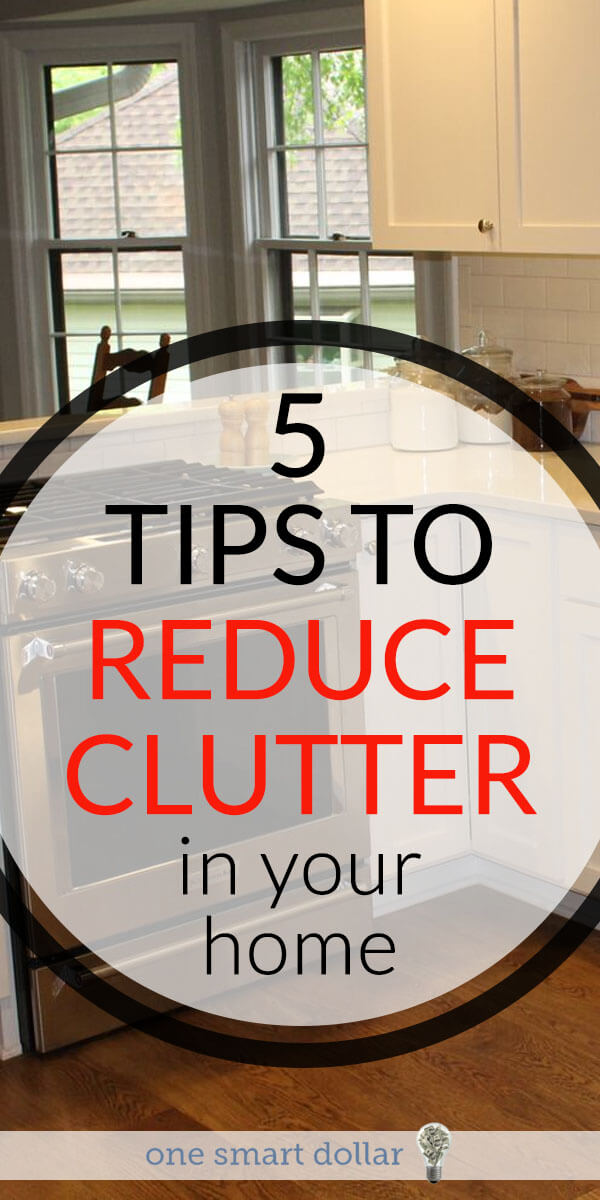
We don’t always realize how significant our clutter is until it fully takes over our lives. It’s truly frustrating to feel like your home is caving in on you, things are lost, and you’re stressed from trying to manage it. At this point, we finally realize the amount of stuff we’ve accrued and how disorganized our home really is. There are two main types of clutter, the typical clutter that covers countertops and fills closets and drawers, and the organized clutter, neatly stored but filling every orifice of your home and you have no idea what you really have. Either way, your home is cluttered and making organization and clean up more difficult. The good news is with some hard work and determination, you can declutter your home and keep it that way.
Before you start the decluttering process, it’s important to shift your focus on living more simply. Remind yourself often that life is so much more than the material items you collect. Many times we buy stuff to fill a void or for instant happiness. But the void is not filled and that burst of happiness passes quickly. The more we collect stuff, the more space we need to store the stuff and the more attention it takes away from the important things, whether that’s family, friends or a hobby. A cluttered life full of stuff is actually very stressful.
Here are a few tips to help you get going on the path to decluttering.
6 Simple Tips for Decluttering Your Home
Keep a Donate and Sell Box Handy
Store a couple of bins in an extra closet, basement or storage area in your home that’s easy to get to and designate them the “donate” and “sell” boxes.Whenever you come across a piece of clothing or household item you no longer want, stick it in one of the bins right away. Put a reminder on your calendar to drop off items at a charity once a month or every few months depending on how much you have. Make sure to collect a tax receipt for each donation. If you want to make a little extra money, sell your items on Craig’s List or your local buy/sell/trade Facebook pages. You’ll be surprised how the stuff you no longer want is in high demand from others willing to hand over cash.
Limit Keepsake Items
There are the sentimental, heirloom items that are given to us from family and the sentimental items we collect during our own life. Don’t feel obligated to keep things that are given to you. If you don’t love a family item, let the person know that you’re trying to live with less, don’t really have room and be honest if it’s not your style. Before we know it, we can end up with boxes of family keepsakes that are just taking up space and we’ll never use. It’s ok to say “no” to more stuff. It’s wonderful to have a few select items to remember our family members, but how much do we really need? For your own personal memorabilia and those of your kids, sort through your keepsakes and think hard about their importance. Only keep items that you feel will be important to look back at years from now or ones to share with your kids. When it comes to your kids’ artwork, you can always snap a photo of it and keep it saved that way rather than the actual art itself. Kids accrue a lot of art and special school projects over the years—choose wisely.
The Importance of Clean Counters
Tidy closets and drawers are wonderful but one of the most important areas of your home to keep neat are your countertops. Kitchen counters are a dumping ground for everything, by everyone, in your home. Mail, keys, school work, notes about activities, receipts, checkbooks, and more get lost in piles on your counters if there’s no method to the madness. The first thing you need to do to control the clutter is designate an inbox for the paper items. If it’s paper, it needs to go here. Take a couple of minutes every day to sort through the inbox. Toss anything that can be thrown, file bills and important mail away from the office, and handle school work and permission slips right away. Anything with upcoming dates should be put into your main calendar system whether it’s electronic or an old-school write-on calendar.
Tackle One Room at a Time
Decluttering and organizing is a lot of work, but you can make it less overwhelming by tackling one area or room at a time. Pick a day where you have several hours to dedicate to the project. Be prepared to toss, donate and sell items right from the start. Go through every nook and cranny, every drawer and closet. Before you put items back, make sure it fits, isn’t stained, has been worn within the past couple of years and isn’t past the expiration date. Set up a great organization system in the drawers and closets that make it easy to keep tidy. The key is to make sure everything has a place or a “home”. For instance, organize your closet in a way there’s a space to put items that don’t hang, like handbags and shoes. It may be a good time to invest in organizers. There are great DIY closet organization options on the market now that make it easy and affordable.
The “Maybe” Box
Sometimes we’re just not ready to part with certain things—it could be a favorite faded shirt or special cards and letters from someone you care about. For these occasions, stick a maybe box in a tucked away place and remove items you’re unsure about tossing or donating and deposit into this box. Think on it for a length of time (ex. 2 weeks-2 months) and decide if you’re fully prepared to live without this item. Very rarely do people move their “maybe” items back into circulation. Once it’s out of sight, we typically realize we can easily pitch the item without looking back.
Teach the Troops
After going through so much effort decluttering and organizing your home, the last thing you want to do is go back to old habits. It’s crucial to get your entire family on board with your new, organized life. This means teaching everyone in the house what to do with their stuff. Kids need to be taught the importance of putting their things away where they belong. Keep reminding them to toss out old papers into the trash. Work with them to keep their drawers and closets neat. These habits are easiest to learn and maintain when mastered young. Set a date on the calendar every few months for maintenance. There will always be areas you’ll need to sort through again, but hopefully, it won’t be as time-consuming as the first time. You may even find that after living a more orderly life, there are more possessions you’re willing to part with. Sometimes it takes up to three rounds before we’re fully prepared to give something up.

